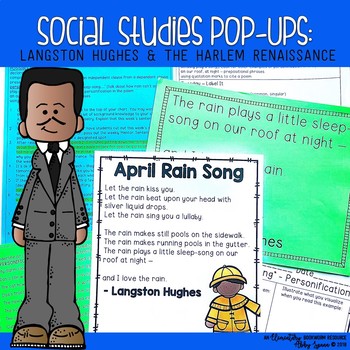Langston Hughes & The Harlem Renaissance {Social Studies Pop-Ups}
- PDF
Description
Not enough time in your day to teach Social Studies?
Social Studies Pop-Ups help you fit it all in! These units integrate specific social studies concepts, close reading, comprehension activities, mentor sentences, and more! Your students will L-O-V-E the mentor texts for each week and your days will move seamlessly from literacy to content area instruction.
This unit centers on the mentor text and poem, "April Rain Song" by Langston Hughes. Within this unit you will find:
- 5 days of mentor sentence lessons and activities
- differentiated language arts skill pages (focus: personification, review: prepositions)
- an original informational close reading passage (The Harlem Renaissance)
- 6 differentiated comprehension and vocabulary activities connected to the close reading passage
- a small OR whole group game to reinforce the week's grammar skill (personification)
- assessments for language arts (personification & prepositions) and close reading
If you have any questions prior to purchasing, please don't hesitate to ask via the Q&A tab, OR you can email me at thirdgradebookworm@gmail.com !
If you're looking for more Social Studies Pop-Ups, be sure to check out
Lillian's Right to Vote: The Constitution and Voting Rights
What Can a Citizen Do: The Rights and Responsibilities of Citizens





